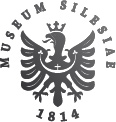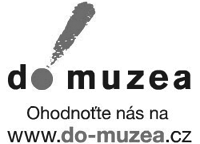ČASOPIS SZM SÉRIE B – VĚDY HISTORICKÉ
LXVI/3/2017
OBSAH/CONTENTS
STUDIE/STUDIES
Jiří JUCHELKA: Symbolika a rituální význam koně v pravěku s důrazem na období popelnicových polí a starší dobu železnou ve střední Evropě – 2. část / The symbolism and ritual significance of the horse in prehistoric times, with emphasis on the Urnfield culture and early Iron Age period in Central Europe – part 2.
(s. 189–207)
Abstract
The second part builds on the text published in the previous issue of the Journal of the Silesian Museum and continues smoothly where the article was terminated in the previous issue, i.e. in chapter 5 entitled "The Central European Symbolism of the Horse in the Early and Late Bronze Age and the Early Iron Age". In this second part, the reader will get acquainted with further information on horse symbolism, especially during the Early Bronze Age and the Early Iron Age (1300 - 450 BC). The paper will subsequently present an overview of the issue in the period of the Late Iron Age (450 - 0 BC), after the turn of the era (0 - second half of the 6th century AD). The conclusion is related to the period of decay of the fortified settlements period in Central Europe, i.e. the end of the 12th century.
Keywords: horse, prehistoric religion, period of urnfields, Early and Late Bronze Age, Hallstatt.
Monika HLAVATÁ: Sv. Alois Gonzaga a sv. Stanislav Kostka – jezuitští světci jako inspirace výzdoby univerzitních tezí a olomouckých kaplí / St. Alois Gonzaga and St. Stanislav Kostka – The Jesuit saints as inspiration for the decorations of university theses and Olomouc chapels
(s. 209–220)
Abstract
The following article refers to the relationship between graphical university theses originating from the Olomouc and Prague higher education environments and two other paintings in Olomouc - the paintings in the St. Alois Chapel in the Church of Our Lady of the Snows and in the Corpus Christi Chapel of the Jesuit Convict. These works were created within the framework of the Society of Jesus in the first half of the 18th century and depict the Jesuit saints, St. Alois Gonzaga and St. Stanislav Kostka, at Holy Communion.
Keywords: St. Alois Gonzaga, St. Stanislav Kostka, Jesuits, Olomouc, university, theses, oil paintings, Holy Communion, Antonín Liebel, Gottlieb Heiss, Jan Kryštof Handke, Jan Dreschler, Karel František Josef Haringer, Church of Our Lady of the Snows, Corpus Christi Chapel in Olomouc.
Lukáš TUROŇ: Úmrtnost obyvatelstva evangelické farnosti Bystřice nad Olší v „dlouhém" 19. století / Mortality of the population of the Evangelical parish of Bystřice nad Olší in the „long" 19th century
(s. 221–246)
Abstract
The main objective of this study is a description mortality of the population of the evangelical parish of Bystřice nad Olší during the Industrial Revolution. The work presents the development of mortality between 1786 and 1910, wherein the starting point was the study of the register of deaths. When working with the registers, excerption method was used, which consists of rewriting the individual entries into the pre-printed sheets as they follow in the register, wherein we create a new sheet for each year. By using the agreed signs and abbreviations, a duplicate of the register is actually created, which is, however, clear and free of all redundancies. The aggregate method, developed by a group of Cambridge historians, led by P. Laslett, D. Eversly and E. Wrigley, was also used. This method is based on aggregating the monthly and annual sums of the number of married, born and deceased persons and their observation in long time series. This allows large population groups to be processed for very long periods of time. When determining the number of evangelicals in the parish, it was necessary to estimate the number of evangelicals and use the interpolation method. Interpolation can be considered only when the year, for which we estimate the missing numerical value, lies in a time series of two not too distant known and accurate population numbers. The evangelical parish of Bystřice nad Olší was located in a region where agriculture played a substantial economic role throughout the 19th century, and, from the second half of the 19th century, heavy industry began to gradually develop, led by Třinecké Železárny (ironworks), the Ostrava-Karviná Coal Mining District and the Košice-Bohumín Railway. This economic situation also affected the livelihood and living standard of the parish population, they were just the effects of economic booms or crises, along with war conflicts or epidemics, that had a major impact on the development of mortality.
Keywords: historical demography, gross rate, register, mortality, population, evangelical parish of Bystřice nad Olší, 1786 to 1910, "long" 19th century.
Ilona MATEJKO-PETERKA – Jiří PETERKA: František Papoušek a opavské muzejnictví / František Papoušek and administration of museums in Opava
(s. 247–254)
Abstract
The content of the article is a reminder of the personality of a significant national historian, economist and numisma¬tist František Papoušek (1880-1957) in the context of his merits in the field of administration of museums in Opava. Attention is paid to both his cooperation with the Opava museum institutions as well as to his scientific and research and collecting activities in the field of numismatics. The study also includes a concise description of the personal numismatic collection of F. Papoušek, which is now part of the collections of the Silesian Museum, and has, with regard to its international content, a great importance both for the institution itself and for the needs of scientific researchers.
Keywords: František Papoušek, Numismatics, Silesia, museology, Silesian Museum (Opava).
Zdeněk SMOLKA: Hory a město aneb Vstup Ostravy do poezie/ The mountains and the city, or Ostrava entrance into poetry
(s. 257–264)
Abstract
The study focuses on depicting the city of Ostrava and its surrounding industrial region in contrast to the portrayal of the rural environment in the mountain range of the Moravian-Silesian Beskids. It concentrates on the poetry of the turn of the 19th and 20th centuries, especially on the following authors: Josef Kalus, Petr Bezruč, Čechoslav Ostravický and M. Kurt. It examines the forms of both environments, their differences and similarities, the basic contrasts in the creation of both landscapes in the poetic texts, it ponders on their mimetic performance and transformation. It shows when and in what form the city of Ostrava enters the poetry.
Keywords: Josef Kalus, Petr Bezruč, Čechoslav Ostravický, M. Kurt, Czech poetry, regional literature, Moravian- Silesian Beskids, Ostrava.
JUBILEA/ANNIVERSARY
(s. 265–285)
Hrabyň literární. Kapitola z české kultury ve Slezsku let 1890–1938 (Pavel Šopák), Pedagog a muzejník Heinrich Kinzer (K 150. výročí narození) (Pavel Šopák), Knihkupec a vydavatel Adolf Perout (Josef Šerka), Otto Kamberský ve Slezsku (Pavel Šopák), Glosa k jubileu Antonína Glose (Ondřej Kolář), K výročí úmrtí Jana Vyhlídala (Ondřej Kolář)
RECENZE/REVIEWS
(s. 286–101)
Tereza Kovaříková – Pavel Marek – Ivan Puš, Starostové. Vůdcové nebo služebníci? Role starosty v samosprávě na příkladech Olomouce, Prostějova a Zlína na přelomu 19. a 20. století (Pavel Kladiwa), Lenka Rychtářová, Bezruč a umění (Veronika Chmelařová), Mahulena Nešlehová, Vlastislav Hofman (1884–1864) Pocta invenci – A Tribute to Invention (Pavel Šopák).
KRONIKA/CHRONICLE
(s. 293–297)
11. sjezd českých historiků. Profesní setkání historiček a historiků České republiky (Vojtěch Pokorný), Sympozium Židé a Morava již po čtyřiadvacáté (Kamil Rodan), Pamětní deska Josefu Lukešovi (Vojtěch Pokorný), Konference o historii umělecko-průmyslových muzeí (Ondřej Kolář).
Poslední aktualizace článku: 19.06.2020
Vytisknout celý článek







